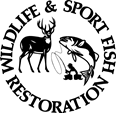Gladewater City Lake 2021 Survey Report  (PDF 450.1 KB)
(PDF 450.1 KB)
If you have difficulty accessing the information in this document, contact the TPWD Inland Fisheries Division for assistance.
Gladewater City Lake - 2021 Survey Report
Prepared by Margaret H. Stadig and Timothy J. Bister
Inland Fisheries Division — Marshall District
This is the authors' summary from a 28-page report. For a copy of the complete report, use the download link in the sidebar.
Fish populations in Gladewater City Lake were surveyed in 2021 using electrofishing and in 2022 using hoop netting. Historical data are presented with the 2018-2022 data for comparison. This report summarizes the results of the surveys and contains a management plan for the reservoir based on those findings.
Reservoir Description
Gladewater City Lake is a 481-acre reservoir located on Glade Creek, a tributary of the Sabine River. It was constructed in 1953 by the City of Gladewater for use as municipal and industrial water supply. Habitat features consisted of inundated timber, brush, creek channels, and riprap. The lake has a history of limited aquatic vegetation. Water hyacinth, a non-native invasive plant, was detected at the reservoir in 2005. Periodic herbicide treatments have prevented the spread of water hyacinth in the reservoir.
Management History
Important sport fish include Largemouth Bass, Channel Catfish, Bluegill, Redear Sunfish, and crappie. Texas Parks and Wildlife Department (TPWD) Inland Fisheries Marshall District staff stocked Threadfin Shad in 2008 to improve the prey fish community. The City of Gladewater purchased (from a private fish retailer) and stocked the reservoir with 15,000 pure Florida Largemouth Bass fingerlings each year from 2008-2010. TPWD has stocked Florida Largemouth Bass fingerlings in both 2016 and 2020.
Fish Community
- Prey species: Threadfin Shad were present in the reservoir. Electrofishing catch of Gizzard Shad was lower than the previous survey, and only 31% were small enough to be available as prey to most sport fish. Electrofishing catch rates of Bluegill in 2021 were higher than in 2017. Bluegill size structure indicates that they are an excellent prey source for most sport fish. Redear Sunfish serve as an additional prey source for predators and grow to sizes desirable to anglers.
- Catfishes: Channel Catfish were collected using tandem hoop nets; however, too few fish were collected to make inferences about the population. Fish ranged from 14-16 inches.
- Largemouth Bass: While Largemouth Bass electrofishing catch rates were lower than the 2017 survey, they were greater than the 2013 survey. The population displayed good size structure with multiple fish collected over 20 inches in length. Body condition for most Largemouth Bass size classes was adequate and improved with length. Spotted Bass catch rates continued to decline; however, this fishery provided additional angling opportunities.
- White Crappie: Crappie were collected using tandem hoop nets. White Crappie were more abundant than Black Crappie with multiple fish collected up to 13 inches
Management Strategies
- Continue to stock Florida Largemouth Bass fingerlings every 4 years to maintain a quality bass population. Florida Largemouth Bass will next be stocked in 2024 at a rate of 100 fish/acre.
- Monitor water hyacinth and provide technical guidance to the City of Gladewater regarding invasive vegetation management and consult with TWPD’s Aquatic Habitat Enhancement team on vegetation control as necessary. Improve fish habitat and angling success through the deployment of artificial habitat structures.

Performance Report as required by Federal Aid in Sport Fish Restoration Act Texas Federal Aid Project F-221-M-3 Inland Fisheries Division Monitoring and Management Program